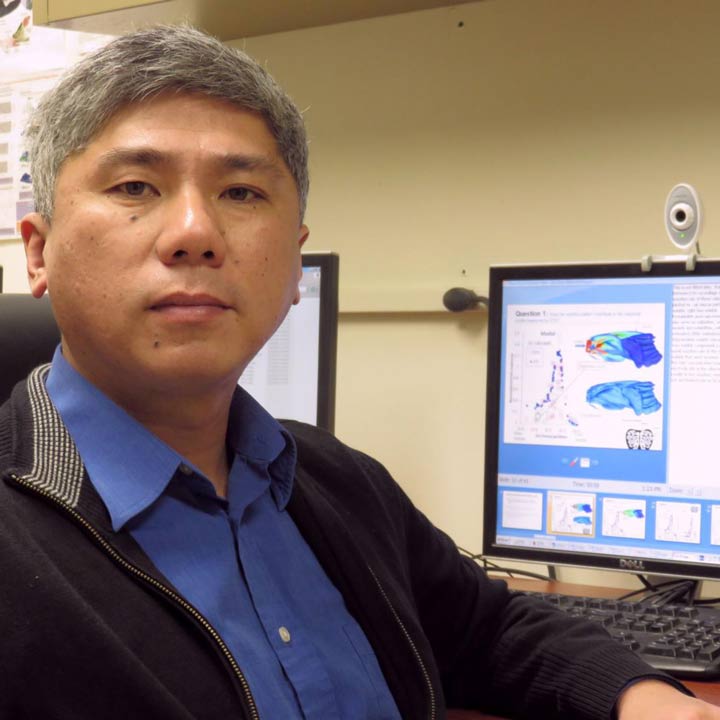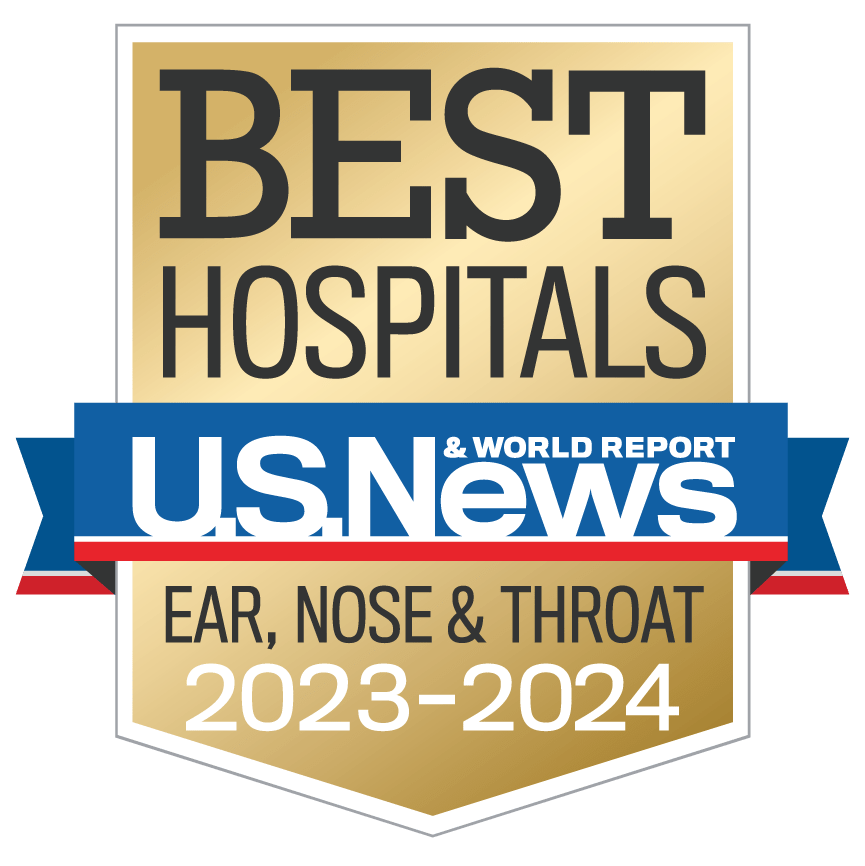 Kai Zhao, PhD, associate professor in the Department of Otolaryngology – Head and Neck Surgery at The Ohio State University College of Medicine, was recently awarded a National Institutes of Health Research Project Grant (R01) for his continued work in identifying novel mechanisms and therapeutic approaches for nasal obstruction and olfactory losses.
Kai Zhao, PhD, associate professor in the Department of Otolaryngology – Head and Neck Surgery at The Ohio State University College of Medicine, was recently awarded a National Institutes of Health Research Project Grant (R01) for his continued work in identifying novel mechanisms and therapeutic approaches for nasal obstruction and olfactory losses.
About 13% of adults in the United States suffer from nasal sinus disease. Although nasal obstruction and smell loss are two of the major symptoms of the disease, there are no clinical tools to objectively evaluate the underlying causes of these symptoms, which limits the ability to treat them.
“The proposed study aims to develop novel clinical tools to better evaluate and relieve patients’ nasal obstructive symptoms and to enable patients and clinicians to make more informed, personalized decisions regarding treatment strategy,” Dr. Zhao says.
Dr. Zhao’s research is a continuation of a previous R01 grant-supported study, where he demonstrated that nasal obstructions may not be caused by a blockage at all, but by a poor sensation of airflow through the trigeminal cool-sensitive (TRPM8) pathway.
“We found that if you direct more air to the impacted region, the patient will feel better,” Dr. Zhao says. “We’re now studying if this tool can predict potential problems and support future surgery.”
This research looks to validate clinical tools for diagnosis and treatment to bring better patient outcomes.
“Dr. Zhao’s work brings a unique perspective to managing nasal obstruction,” says Bradley Otto, MD, clinical associate professor in the Department of Otolaryngology – Head and Neck Surgery at the Ohio State College of Medicine. “This research has a clear path where it can be translated to support patients experiencing these conditions.”
In the next phase, the team will attempt to learn which of these sensory regions are most critical to sensing airflow. Dr. Zhao hopes that by better understanding the nasal regions and variations in sensation, they can better guide treatments for patients.
“This study is important because a lot of how we conduct clinical practice in nasal obstruction is solely by patient experience, not by measurement,” Dr. Zhao says. “We want objective measures that can pinpoint diagnosis of what patients are reporting.”
In particular, the research is targeting a cool-sensing receptor in the mucosa of the nasal passage, which gives the sense of an open airway. Dr. Zhao compares the sensation to the feeling of going into a steam room and feeling like you can’t breathe.
“We are trying to understand what the actual nasal obstruction is,” Dr. Zhao says. “Typically, patients think it’s a physical blockage that blocks our senses, but often it is not. By better understanding our senses, we can provide targeted therapy or surgery to improve these symptoms.”
Dr. Zhao and his team are also working on a novel over-the-counter nasal aid that can relieve patient symptoms. “It’s similar to earplugs,” Dr. Zhao says. “Patients can put it in their nose, feel better and enhance their sense of smell. It’s very patient-targeted therapy they can use at home.”
The ability to develop this novel device is aided by close ties between researchers and clinicians at The Ohio State University Wexner Medical Center. “This research is very well supported by the department from a clinical perspective,” Dr. Zhao says. “As a tertiary, academic health center, we have great access to patient populations, dedicated research resources and capacity to recruit patients in the clinical setting. It’s unique for our department compared to other communities nationally.”
“This is a collaborative effort within the department that highlights the strength of the team and our work together between clinicians and researchers,” Dr. Otto says. “Our research space is right next to our clinical space, so patients can participate in research and go to the clinic in a way that’s convenient for them.”
In addition to his grant to study nasal obstruction, Dr. Zhao received a second R01 grant to study the impact of COVID-19 on sensory loss.
As a next step, Dr. Zhao hopes this research can lead to interventional clinical trials that will allow improved surgery outcomes for patients, which currently have inconsistent success.
“These research outcomes may validate novel clinical tools to better identify factors that directly impact obstructive symptoms and relieve those symptoms,” Dr. Zhao says. “The goal is to assist patients and clinicians in planning effective, well-informed, personalized treatment strategies, potentially saving millions of health care dollars annually while improving patient satisfaction.”

2024 Year in Review
See how Ohio State is shaping the field of Otolaryngology – Head and Neck Surgery.

